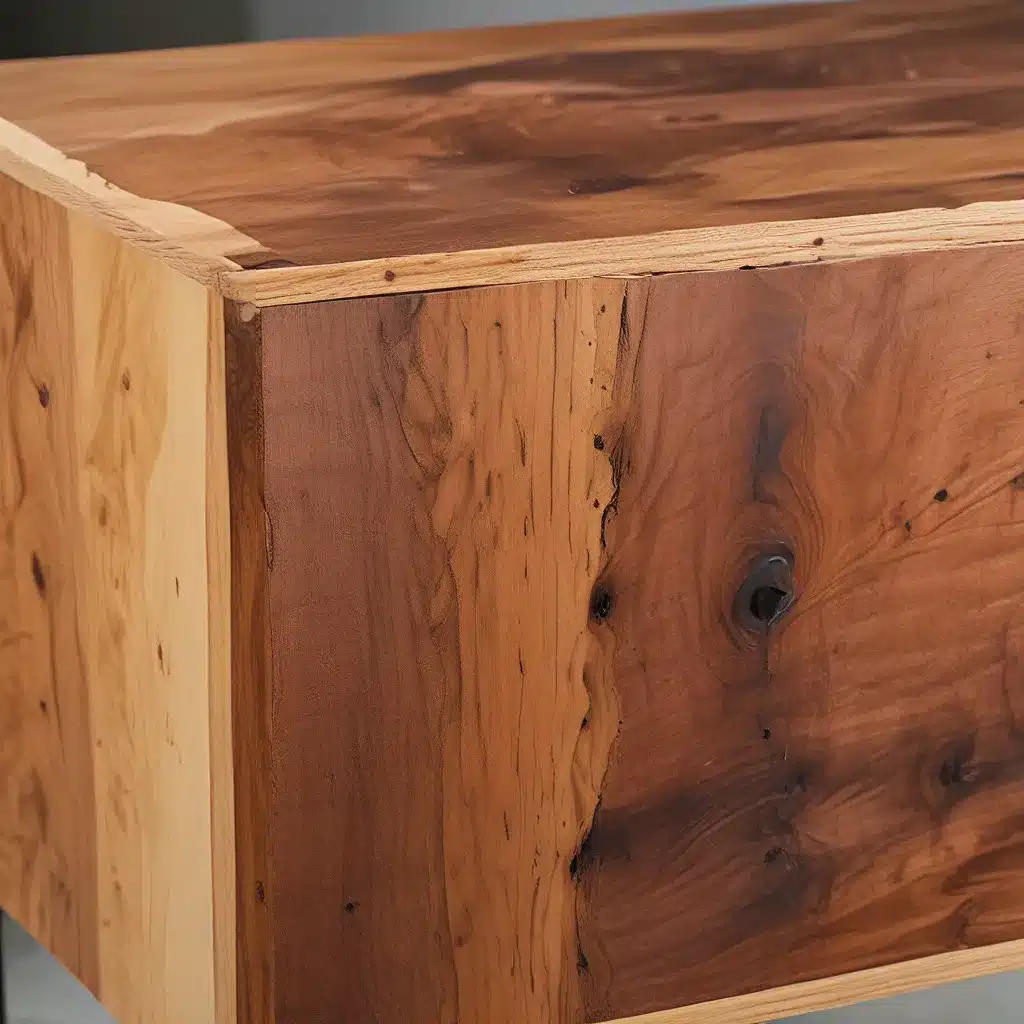
Honoring the Past, Embracing the Future
As a self-proclaimed woodworking enthusiast, I’ve always been fascinated by the endless possibilities that arise when you blend time-honored techniques with modern innovations. It’s a dance, really – an intricate choreography of old and new, where the classic and the contemporary coexist in perfect harmony. And let me tell you, there’s no better place to witness this captivating performance than in the world of unfinished furniture.
You see, I’m the kind of person who can’t resist a good story. And when it comes to the evolution of woodworking, the narrative is nothing short of spellbinding. It’s a tale of masters who have honed their craft over generations, passing down the secrets of their trade like a well-guarded treasure. And then there are the visionaries – the pioneers who look at those time-honored methods and say, “Well, what if we tried it this way?”
Just take a look at the way modern furniture designers have been playing with wood tones. Gone are the days of matchy-matchy; instead, we’re embracing the beauty of contrast, layering different shades and grains to create a truly one-of-a-kind masterpiece. It’s like a symphony, where each instrument – or in this case, each wood tone – adds its own unique voice to the overall composition.
Tage Frid: A Woodworking Maestro
And let’s not forget the trailblazers who have paved the way for this new era of woodworking. One name that immediately comes to mind is the legendary Tage Frid – a Danish-born cabinetmaker who left an indelible mark on the industry.
Frid’s journey took him from the Royal Danish Cabinetmakers to the hallowed halls of the School for American Craftsmen and the Rhode Island School of Design. Along the way, he became a revered teacher, writer, and editor, sharing his wisdom with countless aspiring woodworkers. And let me tell you, the man had a way with words (and tools) that could both inspire and terrify his students.
Frid was a master of the sarcastic zinger, unleashing gems like “Nice dovetails. What’d you use, a chainsaw?” or “Congratulations, you’ve just figured out the most complicated way to hold a board 30 inches off the floor.” But beneath that sharp tongue lay a deep well of knowledge and a genuine desire to push his students to greatness.
Bridging the Gap: Frid’s Innovative Approach
What made Frid’s teachings so influential was his ability to seamlessly blend the old and the new. He was a firm believer in the power of solid joinery and the inherent beauty of wood – principles that had been guiding furniture makers for centuries. But he also embraced the potential of modern tools and techniques, always looking for ways to streamline the process without sacrificing quality.
Take his iconic 3-legged stool, for example. Frid’s design was a testament to his keen eye for proportion and his willingness to challenge traditional norms. By rethinking the conventional 4-legged stool, he created a piece that was both visually striking and remarkably stable. And the story behind its creation is just as captivating – Frid was reportedly inspired by watching a horse show and sitting on a fence.
But Frid’s influence extended far beyond his own designs. He was also instrumental in shaping the way we think about woodworking education. His approach was rooted in teaching the fundamentals – solid joinery, wood grain, and proportion – but he always left room for experimentation and problem-solving. After all, as he once said, “Don’t you get bored demonstrating the same old dovetail? Maybe you left too early. I always demonstrate difficult joints and techniques depending on what the audience wants.”
Embracing the Unexpected
And that, my friends, is the beauty of blending old and new in woodworking. It’s about embracing the unexpected, pushing the boundaries, and finding new ways to breathe life into the timeless craft. Sure, there’s a certain comfort in sticking to the tried-and-true methods, but where’s the fun in that?
Just take a look at the Amish woodworkers, who have been known to incorporate modern tools and techniques into their time-honored practices. They’re not afraid to experiment, to find innovative solutions to age-old challenges. And the results are nothing short of awe-inspiring.
It’s this kind of creative spirit that I find so captivating. The willingness to look at the past and say, “Okay, but what if we try it this way?” That’s where the magic happens, my friends. That’s where we discover the true potential of woodworking – a fusion of old and new, tradition and innovation, that can transform the ordinary into the extraordinary.
Embracing the Unexpected, Honoring the Past
So, as I set out to create my own unfinished furniture masterpieces, I find myself constantly drawn to this idea of blending the old and the new. I’ll start with a classic design, perhaps inspired by the Danish modern stylings of Tage Frid himself, and then I’ll start to experiment. Maybe I’ll play with contrasting wood tones, or incorporate a surprising curve that challenges the traditional silhouette.
And you know what? I wouldn’t have it any other way. Because in the end, that’s what truly sets the world of unfinished furniture apart. It’s not just about creating beautiful pieces; it’s about honoring the past while embracing the future. It’s about taking the time-honored techniques that have stood the test of time and finding new and innovative ways to bring them to life.
So, the next time you’re browsing the aisles of your local unfinished furniture store, I encourage you to let your imagination run wild. Forget about the matchy-matchy, and instead, let your inner Tage Frid shine through. Who knows what unexpected masterpiece you might just create?
Explore the endless possibilities at Unfinished Furniture today and let the dance of old and new begin.








